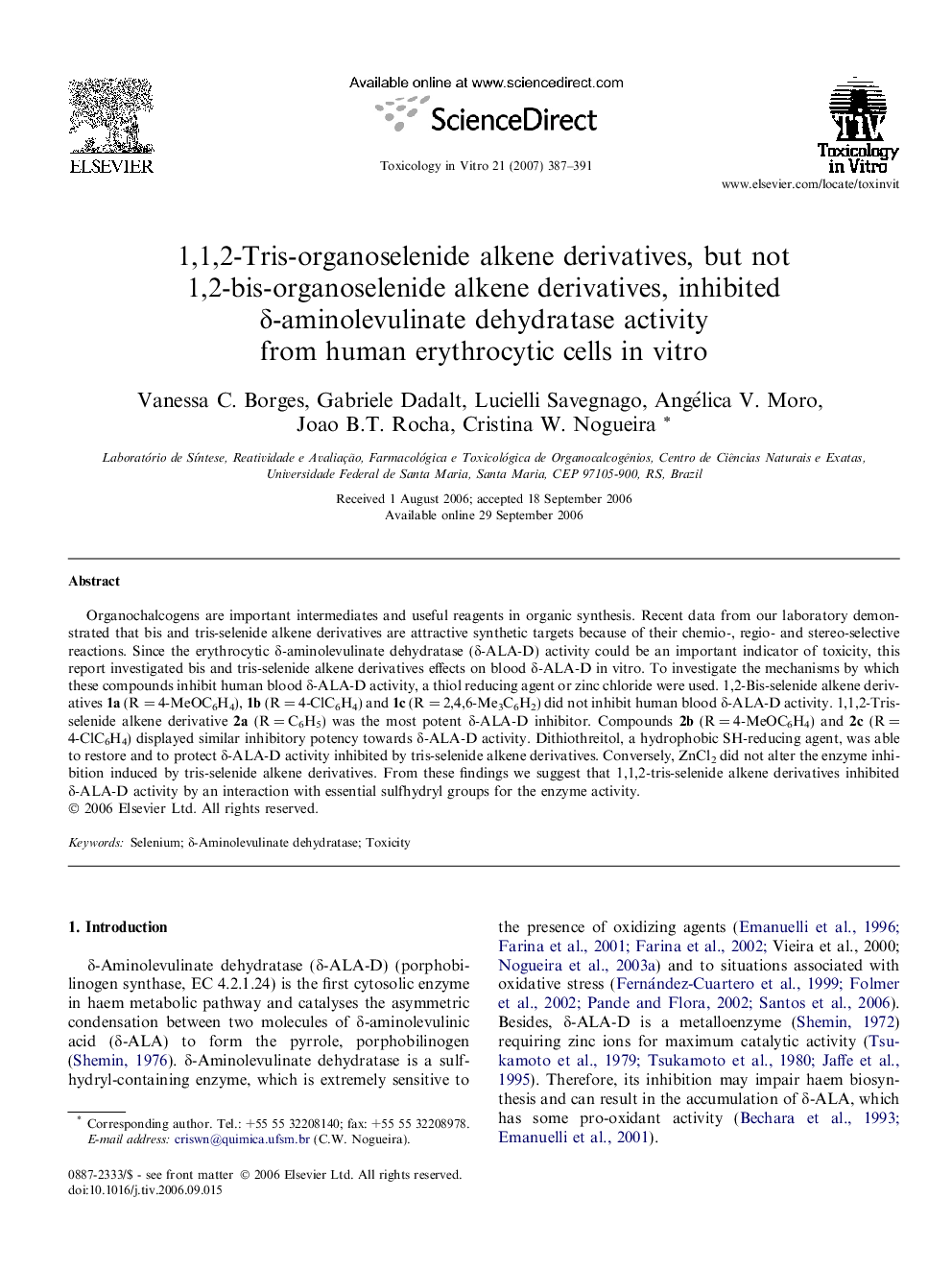| Article ID | Journal | Published Year | Pages | File Type |
|---|---|---|---|---|
| 2603844 | Toxicology in Vitro | 2007 | 5 Pages |
Abstract
Organochalcogens are important intermediates and useful reagents in organic synthesis. Recent data from our laboratory demonstrated that bis and tris-selenide alkene derivatives are attractive synthetic targets because of their chemio-, regio- and stereo-selective reactions. Since the erythrocytic δ-aminolevulinate dehydratase (δ-ALA-D) activity could be an important indicator of toxicity, this report investigated bis and tris-selenide alkene derivatives effects on blood δ-ALA-D in vitro. To investigate the mechanisms by which these compounds inhibit human blood δ-ALA-D activity, a thiol reducing agent or zinc chloride were used. 1,2-Bis-selenide alkene derivatives 1a (R = 4-MeOC6H4), 1b (R = 4-ClC6H4) and 1c (R = 2,4,6-Me3C6H2) did not inhibit human blood δ-ALA-D activity. 1,1,2-Tris-selenide alkene derivative 2a (R = C6H5) was the most potent δ-ALA-D inhibitor. Compounds 2b (R = 4-MeOC6H4) and 2c (R = 4-ClC6H4) displayed similar inhibitory potency towards δ-ALA-D activity. Dithiothreitol, a hydrophobic SH-reducing agent, was able to restore and to protect δ-ALA-D activity inhibited by tris-selenide alkene derivatives. Conversely, ZnCl2 did not alter the enzyme inhibition induced by tris-selenide alkene derivatives. From these findings we suggest that 1,1,2-tris-selenide alkene derivatives inhibited δ-ALA-D activity by an interaction with essential sulfhydryl groups for the enzyme activity.
Related Topics
Life Sciences
Environmental Science
Health, Toxicology and Mutagenesis
Authors
Vanessa C. Borges, Gabriele Dadalt, Lucielli Savegnago, Angélica V. Moro, Joao B.T. Rocha, Cristina W. Nogueira,
